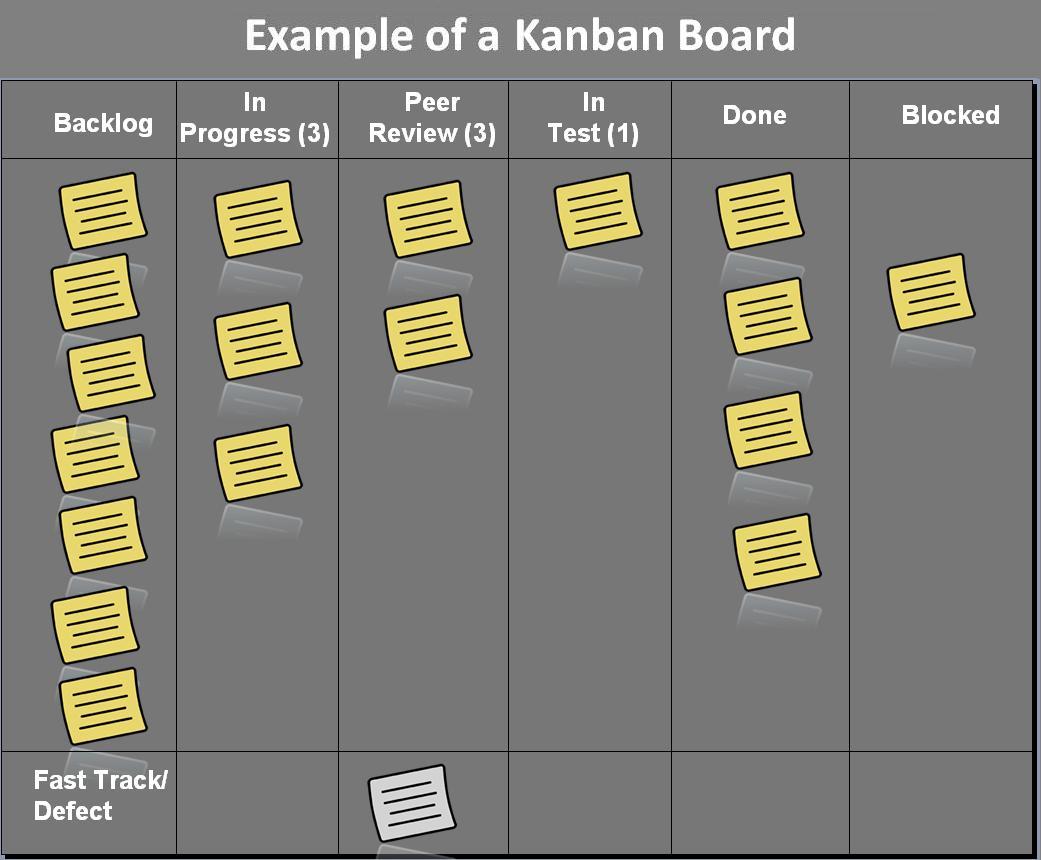The myth of Kanban is set in the late 1940s, when Toyota began to optimize inventory levels. Several authors describe this as an engineering process. It isn’t, but myths are not invented to tell truths, but to elevate the mundane into eloquent and compelling stories. In this myth, Toyota’s goal was to align inventory levels with the actual consumption of materials. To communicate capacity levels in real-time on the factory floor (and to suppliers), workers would pass a card, or kanban, between teams. When a bin of materials used on the production line was emptied, a kanban was passed to the warehouse describing the material and its quanity. The warehouse would then send a replacement to the factory floor, and their own kanban to their supplier. The supplier would then ship a bin of material to the warehouse. While the physical cards may have disappeared, Just In Time (JIT) remains at its heart of modern manufacturing.

Kanban moved from esoteric knowledge about Japanese business practices, to myth in 2010, when David Anderson wrote Kanban: Successful Evolutionary Change for Your Technology Business. The book is only incidentally about Kanban. It is more about the evolution of a software development approach at Microsoft in 2004, to a better approach at the Bill Gates owned digital image business, Corbis, in 2006-7, designated Kanban. About the same time there were several others who were name-dropping Kanban, and suggesting variations of it as a form of lean production, especially for software.
The key point with Kanban is that it works in organizations engaged in processing, either in terms of products or services. It is less applicable in organizations working on projects.
Service organizations, can establish teams to supply these services, using JIT principles. This requires them to match the quantity of Work In Progress (WIP) to the team’s capacity. This provides greater flexibity, faster output, clearer focus and increased transparency. Teams can implement virtual kanban methodology.
In Japanese, kanban translates as visual signal. For kanban teams, every work item is represented as a separate card on the board.A kanban board is a tool used to visualize work and to optimize work flow across a team. Virtual boards are preferred to physical boards because they are trackable and accessibile at every workstation. They visualize work. Workflow is standardized. Blockers and dependencies are depicted, allowing them to be resolved. Three work phases are typically shown on a kanban board: To Do, In Progress and Done. Since the cards and boards are virtual, the unique needs of any team can be mapped to reflect team size, structure and objectives.
Truthing is at the heart of kanban. Full transparency about work and capacity issues is required. Work is represented as a card on a kanban board to allow team members to track work progress visually. Cards provide critical information about a particular work item, including the name of the person responsible for that item, a brief description and a time estimate to completion. Virtual cards can have documents attached to them, including text, spreadsheets and images. All team members have equal access to every work item, including – but not restricted to – blockers and dependencies.
An important management task is to (re)prioritize work in the backlog. This does not disrupt team efforts because changes outside current work items don’t impact the team. Keeping the most important work items on top of the backlog, ensures a team is delivering maximum value. A kanban team focuses on active works in progress. Once a team completes a work item, they select the next work item off the top of their backlog.
Cycle time is the time it takes for a unit of work to travel through the team’s workflow–from the moment work starts to the moment it ships. This metric can provide insights into delivery times for future work.
When a single person holds a skill set, that skill set can potentially becomes a workflow bottleneck. Overlapping skill sets eliminates that potential bottleneck and may reduce cycle times. Best practices, encourage team members to share skills and to spread knowledge. Shared skill sets mean that team members can enrich their work, which may further reduce cycle time. In kanban, work completion is a team responsibility.
A kanban feature is to set a limit on the number of works in progress. Control charts and cumulative flow diagrams provide a visual mechanism for teams to see change. A control chart shows the cycle time for each work item, as well as a rolling average. A cumulative flow diagram shows the number of work items in each state. Combined, these allow a team to spot bottlenecks and blockages.
My interest in Kanban is tied to my son, Alasdair’s use of it for process management with the Council for Religious and Life Stance Communities Bergen (Samarbeidsrådet for tros- og livssynssamfunn Bergen, STLB). See: https://www.stlb.no/english/ . It is available as an app for Nextcloud, Deck. See: https://apps.nextcloud.com/apps/deck . This will be installed on our upcoming server, tentatively named Qayqayt.

